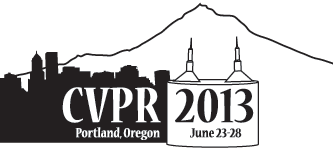-
Explicit Occlusion Modeling for 3D Object Class Representations
AbstractDespite the success of current state-of-the-art object class detectors, severe occlusion remains a major challenge. This is particularly true for more geometrically expressive 3D object class representations. While these representations have attracted renewed interest for precise object pose estimation, the focus has mostly been on rather clean datasets, where occlusion is not an issue. In this paper, we tackle the challenge of modeling occlusion in the context of a 3D geometric object class model that is capable of fine-grained, part-level 3D object reconstruction. Following the intuition that 3D modeling should facilitate occlusion reasoning, we design an explicit representation of likely geometric occlusion patterns. Robustness is achieved by pooling image evidence from of a set of fixed part detectors as well as a non-parametric representation of part configurations in the spirit of poselets. We confirm the potential of our method on cars in a newly collected data set of inner-city street scenes with varying levels of occlusion, and demonstrate superior performance in occlusion estimation and part localization, compared to baselines that are unaware of occlusions.
Related Material
[pdf][bibtex]@InProceedings{Zia_2013_CVPR,
author = {Zeeshan Zia, M. and Stark, Michael and Schindler, Konrad},
title = {Explicit Occlusion Modeling for 3D Object Class Representations},
booktitle = {Proceedings of the IEEE Conference on Computer Vision and Pattern Recognition (CVPR)},
month = {June},
year = {2013}
}
These CVPR 2013 papers are the Open Access versions, provided by the Computer Vision Foundation.
Except for the watermark, they are identical to the accepted versions; the final published version of the proceedings is available on IEEE Xplore.
Except for the watermark, they are identical to the accepted versions; the final published version of the proceedings is available on IEEE Xplore.
This material is presented to ensure timely dissemination of scholarly and technical work.
Copyright and all rights therein are retained by authors or by other copyright holders.
All persons copying this information are expected to adhere to the terms and constraints invoked by each author's copyright.

